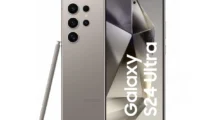The Apple iPhone 12 isn’t expected to launch before fall this year though leaks and speculations have already started to stream in. The latest that we have here is a render of the iPhone 12 depicting what the forthcoming iPhone version could look like. Aand from what seems evident, the new iPhone would be sans the notch this time, a design trend that it popularised with the iPhone X.
With the notch gone, the array of sensors can be seen placed on the bezel itself. You might have already got it right, the notch has given way to the bezels making a return of sorts, albeit in a slightly reformed manner. What that means is that the top bezel would be slightly thicker or, in other words, the notch itself is getting extended all the way to the edges.
The side and bottom bezels too are quite pronounced, making the iPhone 12 seem like having a thick cladding on all sides. Whether or not that goes on to click with the Apple fanboys could be a matter of debate though there is no denying this would mark a significant design shift for the iPhone since the introduction of the iPhone X and its notched display.
This can also make the new iPhone stand out from the sea of Android competitors that have largely gone for a bezel-less design with the display stretching all the way to the edges. Worth mentioning, the latest Sony flagship, the Xperia 1 II still sports the old-school look with slightly thickish top and bottom bezels while having almost none of it along the sides.
Among other speculations that has come to the fore include the one from Ming Chi Kuo who is claiming the new iPhone 12 to come with sensor-shift image stabilisation technology. According to Kuo, the above feature should be part of at least the top-end iPhone 12 variant, likely one with a 6.7-inch display. Needless to say, such an iPhone variant, if true, would come across as the biggest we have ever had so far.
As for the sensor-shift image stabilisation tech itself, Kuo said this will allow for the image sensor itself to move. This in turn will negate movements and vibrations when shooting in a way similar to optical image stabilisation enables the camera lens to move. Needless to say, this should allow for some truly steady and stable video shoots even in the most jerky scenarios.




